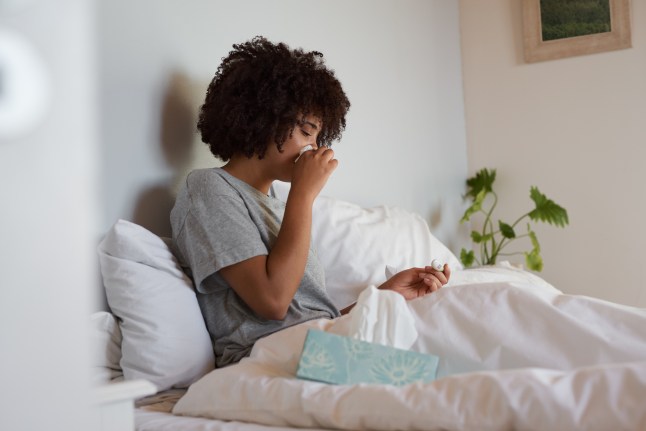23 Dec, 2025 | Admin | No Comments
Tim McGraw unveils sky-high Christmas tree in $15.7m Nashville mansion

Tim McGraw and his wife, Faith Hill, decked their sprawling home out for the holidays – see their towering Christmas tree.
23 Dec, 2025 | | No Comments
M&S has a little-known £5.75 wine range — and two are great mid-week gluggers

Metro journalists select and curate the products that feature on our site. If you make a purchase via links on this page we will earn commission – learn more
There’s very little you can buy for £5.75 these days.
You’d struggle to get a pint at the pub for this price, and forget about ordering a Big Mac meal at McDonald’s.
But Marks & Spencer is throwing us a bone at a time when many of us are struggling to rub two 10 pence pieces together, especially after the onslaught of Christmas gift-buying.
I’ve just discovered they have a little-known range of wines for under £6, with some bottles priced as low as £5.25.

Best of Metro Deals
Get exclusive discounts with Metro Deals – save on getaways and spa days. Powered by Wowcher
Bannatyne Spa
Spa day for two with treatments, lunch & prosecco — save up to 57% off.

Other deals
Mystery Escape
Hotel stay with return flights from as low as £92pp — save on worldwide holiday packages.
Beach Retreat (Lanzarote)
4* Lanzarote beach holiday with flights — save up to 58%.
UK Getaway
4* Radisson Blu Durham stay with breakfast, spa access & late checkout — save 60% off.
Drive Supercars
3–12 lap supercar driving experiences from £16.99 — save up to 65%.
Now, I’ve been a huge fan of the M&S Classics range forever, which showcases decent wines from popular winemaking regions around the world and is reasonably priced around the £8.50 to £10 mark.
But this budget range shows that the retailer clearly has its finger on the pulse of the nation.
Interestingly, it has come at a time when it is almost impossible to flog a wine cheaply in this country. It’s a price point that buckles under the weight of the new duty rates, transport, glass, cork, label, handling fees, margins and storage fees. In fact, it beggars belief that they’ve managed to coax any character from these wines at all, given the circumstances.
The range is made up of six wines: three whites, a rosé and two reds. Each has a name like ‘Round and Plummy’, ‘Crisp and Zesty’, and ‘Rich and Smooth’, just to make things super simple at a time when not much is super or simple.
Have you tried the bargain wine range from M&S?
-
Yes, love it!
-
Not yet
-
On my way to buy some…
Whether they taste good is another story, though this is M&S we’re talking about, a company who have actual winemakers on their payroll, as an integral part of their team.
These wines aren’t about bragging rights, gifting or looking good on Instagram – they’re midweek sippers that deliver you from the guilt factor or festive splurging.
Plus, they’re lower in alcohol (to avoid the higher duty rates), minimising calories and woozy heads in the morning. Looking online, Waitrose has a similar range at the same price, and Asda has one for a ridiculously low £3.54, and I can only imagine what that tastes like.
Naturally, I tried the entire M&S budget range, so you don’t have to. Here are my thoughts…
Vibrant & Zesty White 10%, South Africa, £5.75, Ocado

An uncomplicated style, as you’d expect, made from a blend of South African Sauvignon Blanc grapes. Clean and dry on the palate with subtle notes of fresh pear, almonds and apple blossom. If you like orchard fruit and citrus notes in a dry white wine, this one has your name on it.
Soft & Tropical White 9%, Australia, £5.25, Ocado

Like Ronseal, this one does exactly what it says on the bottle. For clarity, it doesn’t taste like wood varnish; it has an expressive nose of banana and papaya with more than a suggestion of guava. Ripe and sun-kissed on the palate with more of those banana notes coming through and a soft and citrussy acidity. My favourite of the whites, by far.
Crisp & Zingy White 1L 10%, Italy, £9.50, M&S in-store

Having said they’re £5.75 or less, this litre-bottle format works out at just over £7 for a 750ml bottle equivalent. Not sure why they’ve positioned this differently than the rest, the quality doesn’t justify the higher price point. Not that £7 is exactly expensive for a dry and citrussy bottle of white, accented by notes of apricot and white flowers. It’s made using the ubiquitous Trebbiano grape that makes, well, simple and gluggable whites like this.
Rosé
Soft & Fruity Rosé 10.5%, Australia, £5.25, Ocado

A dry Aussie rosé, made from the juicy Grenache grape, with notes of candied strawberries and dried cranberries. For the price, you can’t go wrong, though I’d be tempted to make this into your own version of mulled rosé while splashing out on a more elevated bottle of pink for the Christmas table.
Red
Round & Plummy Red 10.5%, Chile, £5.75, Ocado

Very Chilean Merlot, and by that I mean round and generous without being in any way intricate or complex. There are some creamy flavours of plum and a stalky, hedgerow fruit herbaceousness on the palate, which make it a somewhat decent budget mid-week glugger.
Rich & Smooth Red 10.5%, Australia, £5.50, M&S in-store (or £5.75, Ocado)

This was the best of the two reds, with Christmas-appropriate flavours of mulled cherries and spiced blood orange. For a Shiraz-led blend, it’s a super light style, meaning it can also be fridge-chilled for twenty minutes before quaffing. There’s also 10% Merlot added to cushion the spice, and in fact, I think this is a decent shout for under £6.
Do you have a story to share?
Get in touch by emailing MetroLifestyleTeam@Metro.co.uk.
23 Dec, 2025 | Admin | No Comments
Woman volunteers at animal show and crowd is in tears after what happens next

A woman ventured to an animal show with her boyfriend and volunteered to take part, with a large bird flying towards her place in the crowd but onlookers were stunned by what happened next
23 Dec, 2025 | Admin | No Comments
Kendall Jenner shares glimpse inside sprawling $23m Montecito estate that neighbors Oprah

Kendall Jenner shared a glimpse inside her sprawling $23 million Montecito estate, which she quietly purchased in February 2025
23 Dec, 2025 | Admin | No Comments
Exclusive: How Kate Hudson and Hugh Jackman’s ‘game for anything’ attitude helped shape Neil Diamond film Song Song Blue

Song Sung Blue is based on the true story of Lightning and Thunder, a Neil Diamond cover act from the 1990s
23 Dec, 2025 | Admin | No Comments
GP says ‘only see doctor’ if you’ve got these 3 symptoms with flu


In the run-up to Christmas, trying not to get ill is an extreme sport.
A mere sniffle from a stranger is enough to strike fear into our hearts, while a cough is definitely reason to be ousted from those festive drinks.
And the ‘super flu’ isn’t helping matters, a subtype of the illness that’s been around for a while (since 1968, to be precise), but has dominated cases this winter. It’s a term that’s been used to describe a particularly severe case of flu, one that’s left many in bed for days on end.
Health professionals are on high alert too, as 60,000 more healthcare workers had flu jabs this year than in 2024, according to NHS England.
But during a time that is notoriously busy for the NHS, how do you know when to grin and bear it — and when to seek help?
One leading doctor has issued advice on when to speak to your GP about your symptoms.
The symptoms to watch out for if you’ve got the flu
Dr Iain Morrison, chairman of the BMA’s Scottish general practice committee, explains that the flu, which arrived earlier this year, forms part of a new strain, which is causing more cases of ‘significant illness’ than seen in previous years.
The main symptom that should prompt you to call the doctor? Feeling tight-chested to the point that you’re struggling to complete even the most basic of tasks, including climbing the stairs. The same applies if you’re even forming sentences become tough.
The GP says: ‘That’s a sign that you’re really struggling with your oxygen levels, and if that’s not usual for you, then you need to get attention.’
If you’re also dealing with ‘significant’ chest pain, he’s advised getting checked. While Dr Iain does say that it’s ‘normal’ to have a bit of muscle ache, if it’s ‘severe and unremitting, then you need to get checked out.’
And the third symptom? Vomiting and diarrhoea. ‘It’s very common, and most will settle within a sort of 24 to 40-hour period, but if it’s so bad that you’re struggling to form any urine, then that is when you need to get yourself checked,’ he adds.

He’s asked that people use services ‘sensibly,’ urging the importance of being patient with staff because, well, ‘they’re all trying their hardest to get through as many people as they can.’
He says: ‘Please be aware that at this time lots of the health services are suffering from staff shortages due to illness, which can lead to more waits and more difficulties with access.
‘We’re all in this together, and only by working together we’ll get through it.’
How to cope if you’ve got the flu
The regular advice for those suffering from flu involves getting plenty of rest, regularly taking paracetamol (or ibuprofen, if you’ve got strong muscle aches), and consuming plenty of fluids, particularly if you’re struggling with a bit of tummy trouble.
Dr Iain added that wearing a face mask only reduces your risk of contracting the flu by a ‘small amount,’ but noted that ‘they can greatly reduce the chances of people with the virus passing it on.’
‘Face masks reduce your chance a little of contracting the virus, but they significantly reduce the chance of you transmitting the virus,’ he concluded.
‘It’s very helpful to those around you to wear one if you have symptoms.’
How long does flu take to incubate?
According to the Superdrug Health Clinic website, the incubation period for flu is between one and four days. So, it’s safe to say that symptoms can come on pretty quickly.
It adds that the most severe symptoms typically last for between two and three days, and they’ll usually stick around for up to seven days. Along these lines, you should make a full recovery within two weeks, but if you’re still struggling beyond that, you should absolutely seek medical help.
How long is flu contagious in adults?
If you do have the flu, you could be contagious for over a week, starting from the day before your symptoms show up.
The NHS website states: ‘You can spread flu from one day before your symptoms start and for a further three to seven days.
‘Children and people with lowered immune systems may be contagious for a few days longer.’
The health service also adds that ‘you’re more likely to give it to others in the first five days’ on its website – but either way, it’s key to follow guidance on stopping the spread.
Flu germs spread through coughs and sneezes, so keep some tissues on hand for catching them, and keep your mouth and nose covered.
How to avoid getting ill before Christmas amid UK’s ‘super flu’ surge
But if you’re desperate to try and avoid getting sick ahead of Christmas, there are a few steps you can take to reduce the risk, according to a doctor.
Dr Suzanne Wylie, a GP and medical advisor for IQdoctor, previously shared five top tips with Metro that she claimed could make a ‘meaningful difference’ to your health.
- Vitamins, vitamins, vitamins
- Avoid alcohol
- Get a flu jab
- Wear a mask
- Practise good Tube hygiene.
Do you have a story to share?
Get in touch by emailing MetroLifestyleTeam@Metro.co.uk.
23 Dec, 2025 | Admin | No Comments
The ultimate royal guide to wearing sequins: Princess Kate, Duchess Sophie & more sparkly party outfits

Royal ladies wearing sequin dresses – the best glittering fashion moments from the Princess of Wales, Princess Charlene of Monaco, Princess Beatrice and Duchess Sophie.
23 Dec, 2025 | Admin | No Comments
Exclusive: Real Housewives of London star Amanda Cronin unveils ‘Barbie’ home near Buckingham Palace after 2-year renovation

Real Housewives of London star Amanda Cronin has unveiled her fabulous London mews house in an exclusive shoot with HELLO!
22 Dec, 2025 | Admin | No Comments
The Princess of Wales’ ‘Quality Street’ dresses has Christmas style unwrapped

The Princess of Wales has worn some hugely sparkling festive dresses in ‘Quality Street’ style jewel tones – rich reds, royal blues, burnt oranges, sapphire greens and purples.
22 Dec, 2025 | Admin | No Comments
Duchess Sophie’s lace dress may just be her most heavenly look yet

The Duchess of Edinburgh looked incredible wearing a white lace, ‘princess-style’ dress as she appeared on Radio Christmas earlier this month.